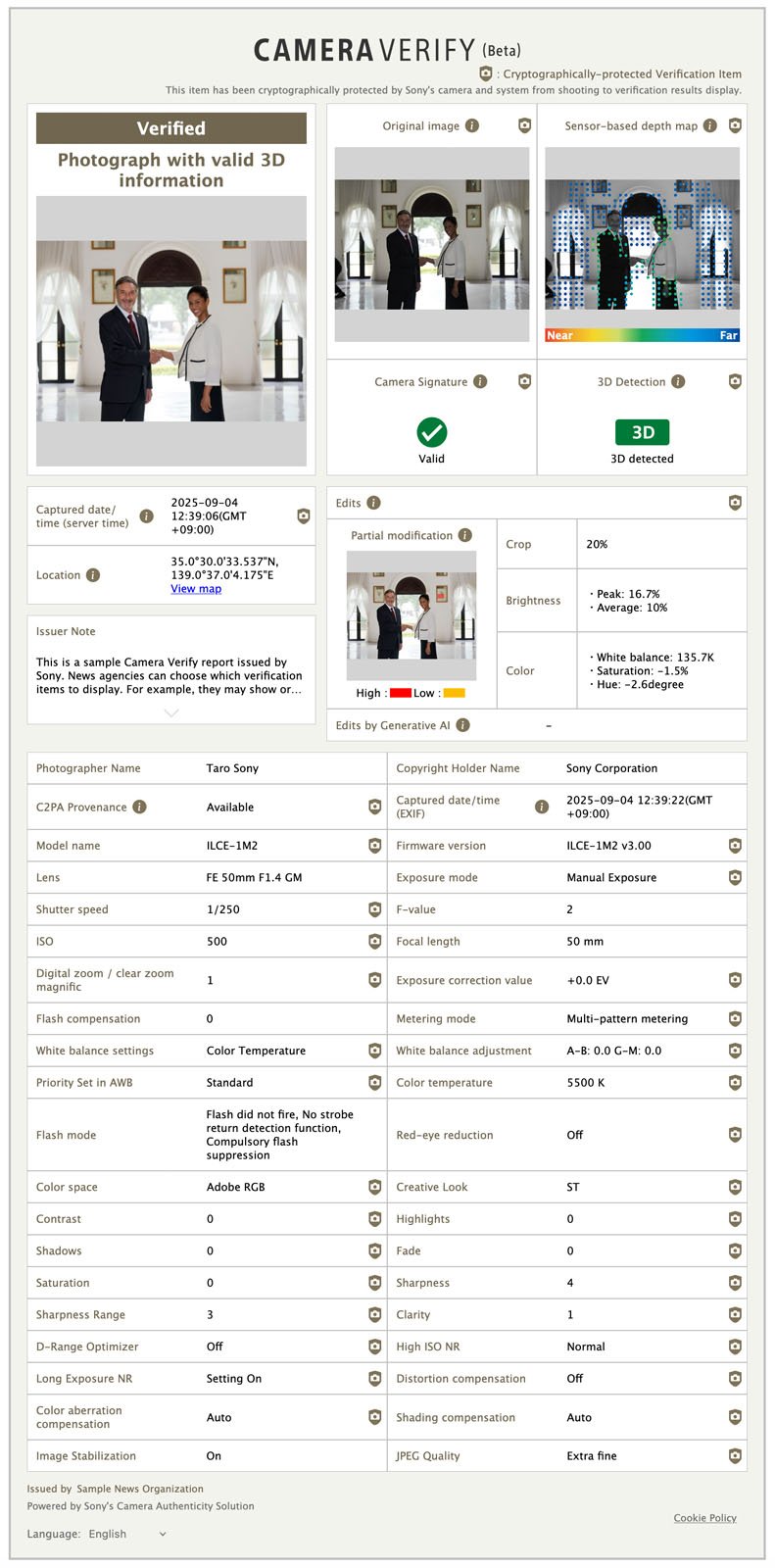Sony Is the First Camera Company to Verify Authenticity of Video Content
![]()
Alongside new Sony a1 II and a9 III firmware updates, Sony has bolstered its commitment to content authenticity, extended its verification technology to video content recorded with select Sony cameras. It is the industry’s first C2PA-compliant camera-authentication solution for video.
Sony’s camera authenticity solution for video is available today for five cameras: the Sony a1 II, Sony a9 III, Sony FX3, Sony FX30, and Sony PXW-Z300. Sony adds that it is developing support for four more cameras. Three of them — the Sony a1, Sony a7R V, and Sony a7 IV — will receive support sometime after November 2025. A fourth camera, the Sony a7S III, will get support in 2026.
The company explains that as generative AI continues to evolve, people’s ability to create and spread convincing fake images is rapidly increasing. Generative AI is now available for video as well, and this technology is becoming increasingly powerful.
![]()
“For news organizations and broadcasters in particular, the importance of providing accurate and reliable information has increased,” Sony explains. “To address this challenge, Sony has been providing camera authenticity solutions.”
As part of this mission, Sony has worked alongside the Research and Development Department of the U.K.’s public broadcaster, the BBC, to advance and test technology to verify the authenticity of not just still-image content, but also videos, which are an essential part of the modern media and news landscape. Sony notes that it also works closely with the C2PA, the standard organization that develops open standards and technical specifications for content authenticity technology. Sony has been a member of the C2PA Steering Committee since March 2022.
![]()
Sony’s camera authenticity solution verification site can authenticate and verify still images and videos captured by compatible Sony cameras, confirming that the content in question was, in fact, recorded by an approved Sony camera rather than AI-generated. The system verifies video in multiple ways, including by detecting 3D depth information, which can confirm not only that the video is legitimate but also that it captured actual three-dimensional objects in the real world.

“Additionally, a trim function that allows extraction and verification of only necessary portions while maintaining signatures enables rapid authenticity verification even for large-capacity video files,” Sony adds.
It is worth noting that the verification site requires a digital signature license, and that users must install a digital signature license on their compatible Sony cameras. The company will now begin providing digital signature licenses for video.
Image credits: Sony